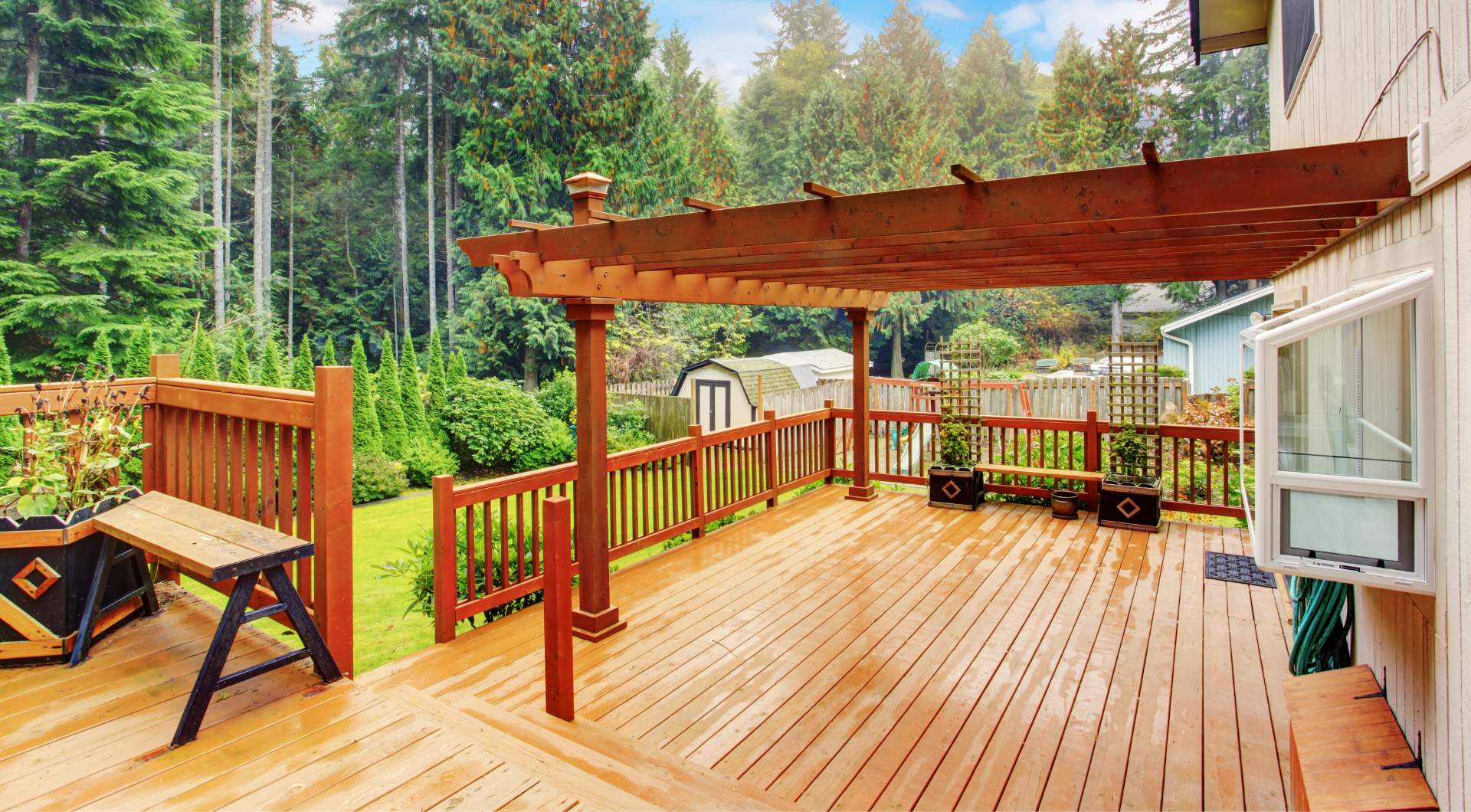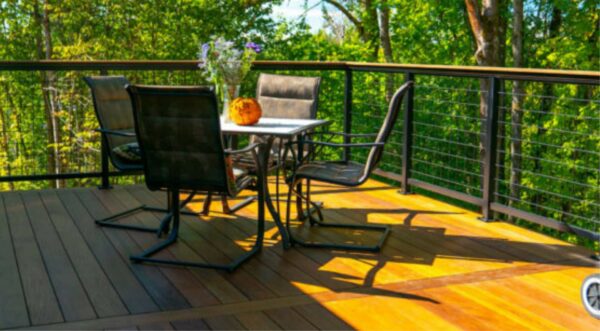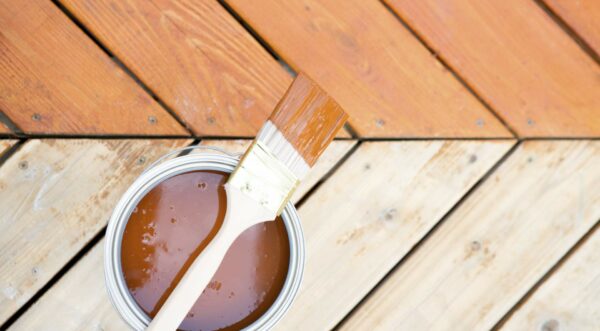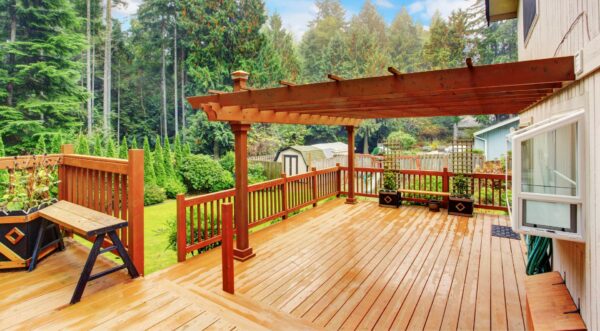Deck Makeover 101: How To Choose a Stain Color for Your Deck
June 26th, 2023 | by Jim Gates

Are you struggling with all of the color choices available for staining your deck? It is an important decision, one that could make or break the appearance of your home.
There are many variables to consider when choosing an appropriate color, but certain characteristics of the wood and your home’s surroundings can help you narrow down the options to the best colors for your deck.
Staining a deck is a big job, so you want to choose a stain that you will be fully satisfied with. We can guide you through the process of choosing a stain color for your deck so that you will have no regrets.
Table of Contents
- How Do I Pick a Wood Deck Stain?
- 5 Things To Consider When Choosing a Deck Stain Color
- Do Some Colors Protect the Wood Better Than Others?
- 3 Tips for How To Choose a Deck Stain Color
- Three Rivers Custom Decks: Creating Premier Outdoor Living Spaces Throughout Portland

How Do I Pick a Wood Deck Stain?
The stain color you pick is a personal choice, but your preference should be guided by several important considerations, such as:
- Darker colors make for a hotter deck.
- The main color and accent colors of your home affect the overall appearance of the deck color.
- The hue of the wood will affect the wood’s appearance after the stain is applied.
- Older wood with more damage or staining will require a more solid color of wood stain.
- The length of time the stain will last depends on its level of opacity. The level of opacity you want depends on how thoroughly you want the wood to be covered.
Consult with Three Rivers Customs Decks for professional help with deciding how to design and finish your deck.
5 Things To Consider When Choosing a Deck Stain Color
#1: The Heat Factor
Darker stains absorb more heat, so choose a lighter stain to reflect the heat if you are concerned about a deck that’s too hot. On the other hand, if your deck is in the shade, a darker stain might be just what you prefer.
#2: The Color of Your Home
You might choose to have the deck color match the main color of your home. This might result in too much of a single color, or it might look modern and sophisticated, depending on the style of your house.
Another idea is to have your deck match the color of your house’s trim. This draws attention to the otherwise less noticeable elements of your home. The deck and the trim will complement each other and create a cohesive picture of your home and deck as a whole.

#3: The Hue of the Wood
The natural hue of the wood, the grain in the wood, and the type of wood all affect how a given stain color will look once dry. Sample a few colors on a piece of the wood in question and see how it looks when finished before applying stain to the entire deck.
If you choose a hardwood such as mahogany for its beautiful grain, you’ll probably prefer a more transparent stain. It will need to be replaced more frequently, and the hue of the wood will play a larger role in the final color result.
For instance, if you choose a red-toned translucent stain, the natural red hue of the mahogany will intensify the finished red color. Adding some green or blue will prevent the final color from looking muddy.
#4: The Age of the Wood
Use a lighter, more transparent stain if your deck is new. If you wish to paint a darker stain in the future, you may do so. It is much simpler than having to remove a dark stain to apply a lighter one.
The older your deck is, the more damage and staining it will undergo. Thus in the future, a darker stain will be increasingly necessary.
Three Rivers Custom Decks can help you learn how to maintain your deck so it doesn’t age quite so quickly.
#5: The Stain’s Opacity
Opacity refers to how solid or transparent the stain is and thus how much of the wood’s grain will show through after application.
The following is a list of the common types of wood stain, in increasing order of opacity.
- Clear: This is a colorless stain that allows the natural color, details, and grain of the wood to show through.
- Translucent: This nearly transparent stain has a slight hint of color but still reveals the grain of the wood.
- Semi-transparent: Halfway between clear and solid, this stain allows some of the wood grain to show through but also gives plenty of color.
- Semi-solid: This stain gives ample color coverage and covers up many imperfections but allows some of the grain to show through.
- Solid: This stain provides almost as much color coverage as paint. It covers up most imperfections and only allows the grain to show through slightly.
Do Some Colors Protect the Wood Better Than Others?
If you live in an area that doesn’t get much sun, the color of the stain has little effect on the degree of protection it provides for the wood on your deck. Dark stains might protect against sun damage, but they are harder to maintain unless they have more penetrating power.
3 Tips for How To Choose a Deck Stain Color
#1: Do a Test Run
If your deck builder hasn’t already offered to do this, ask for some leftover end pieces. You can use these to apply test colors to help you decide which one is right for you. If that’s not a possibility, try a lumberyard or paint store. They often have leftover samples of wood.
Don’t make a decision until the stain has dried because the wet stain color is often significantly different from the dry stain color. Then compare it to the colors on your house and your patio furniture at different times of the day, so you can see how it looks under different light conditions.

#2: Choose a Complementary Color
The color of your deck should harmonize with the color of its surroundings. This includes your home and the landscape around the deck.
For example, if there is a lot of green vegetation around your home, a green-toned stain color might appear excessive. If you have a lot of bright flowers near your home, a more muted stain color might look more appropriate.
Many homeowners who live near the water choose to have a blue-toned stain on their deck, and this complements the seascape nicely.
Whether you want your deck to blend in with your home or be a bold contrast, it is helpful to use the color wheel to avoid colors that clash rather than enhance your home’s appearance.
The color wheel helps you identify similar tones that work well together or contrasting colors that also create an effective aesthetic. You can use the color wheel to find the best colors for your deck furniture and decor as well.
#3: Consider the Location
If your deck is in a place where it’s going to get run-off or particularly dirty, you may want to go with a darker color to hide the dirt. Darker stains also show less wear and tear. A lighter tint will show more dirt and thus need to be cleaned more often.
Three Rivers Custom Decks: Creating Premier Outdoor Living Spaces Throughout Portland
Three Rivers Custom Decks would love to partner with you to help you create the outdoor living space that is perfect for your home. Our well-trained crews, led by crew leaders with at least 15 years of decking experience, will bring to life the plan devised by you in consultation with our professionals.
We offer a wide variety of only the highest quality materials and can assist you in choosing what fits your budget. Contact us today to get started.
